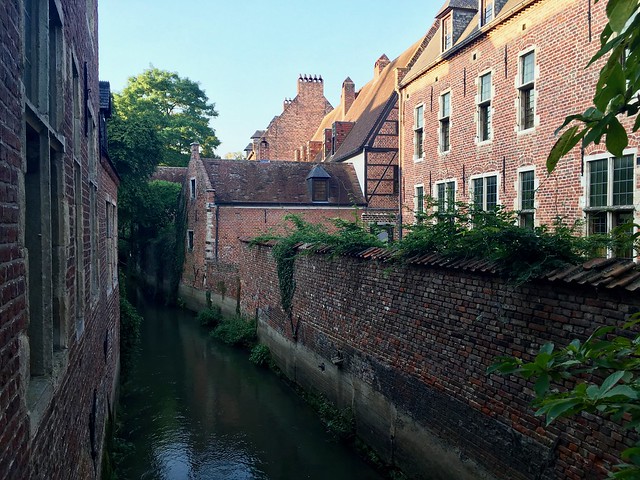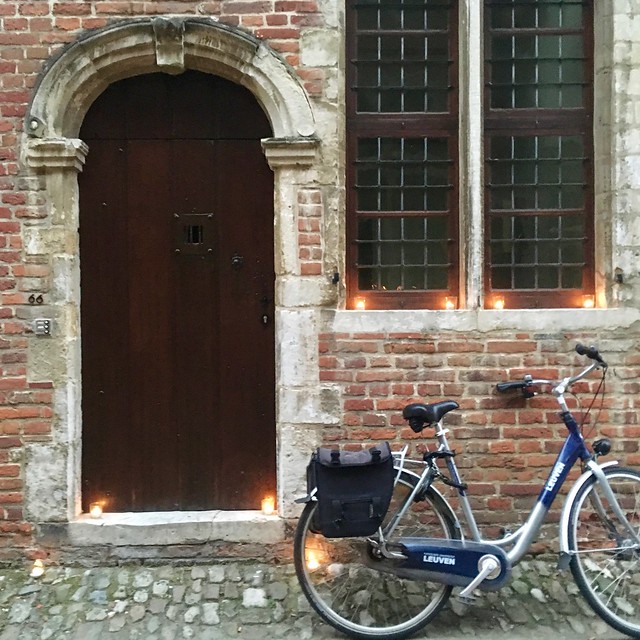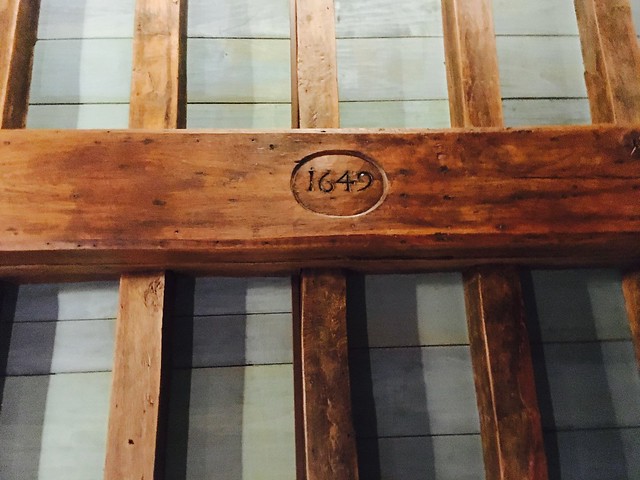Doyle Calhoun is a (2016–2017) Student Research Grantee in linguistics, based at KU Leuven. His research focuses on grammatical and lexicographic records of African languages, that were compiled by French missionaries c. 1840–1930.
Leuven’s Groot Begijnhof— or, in French, le Grand Béguinage— has the appearance of a medieval hamlet perched at the southern edge of the city. That’s because it is a medieval hamlet, albeit one that has been meticulously preserved and restored.
Consisting of a network of narrow cobblestone streets, footbridges, small squares, gated gardens, and over 80 brick and sandstone houses (most dating from the 17th century), the begijnhof covers about 3 hectares, and sprawls over both arms of the river Dijle.
Today, the walled-in community is populated by students, researchers, professors, and (now) Fulbright grantees, all affiliated with the local university. However, its history tells a rich and very different story…
Leuven’s Groot Begijnhof (the city also boasts a klein or ‘small’ begijnhof) originated in the first half of the 13th century. A Latin inscription on the church— anno domini MCCXXXIIII curia incepit— gives 1234 as the founding date, but many historians suspect the community was founded as early as 1205.
The Begijnhof was originally home to a community of (at one point nearly 400) unmarried, semi-religious women called beguines (in Dutch, begijns). These women were part of a Christian lay religious movement that was active in Northern Europe, especially between the 13th and 16th centuries. By the end of the 13th century, most cities in Flanders had one, and in many cases two, béguinages (e.g. Mechelen 1207, Antwerpen 1234, Brugge 1244, Brussel 1245).
Beguines adopted a semi-monastic lifestyle and committed themselves to prayer and good works without taking formal religious vows. Some considered themselves mystics. They appear to have valued their privacy— a fact evidenced by the small, and infrequent, ground floor windows (in some cases, larger windows were hidden from view by the construction of additional walls). Their communities proved remarkably durable and resilient, surviving disease, war, revolution, and the passage of time.
In my own experience living in the begijnhof, I have come to appreciate the quiet and peaceful existence it offers. Once inside the begijnhof’s walls, the noise of the city fades away. The silence is punctuated by the sound of footsteps on the cobblestones, or by the basilica’s carillon, which plays a melody every half-hour. At night, the narrow streets are lit only by lanterns.
Despite this peacefulness, Leuven’s Groot Begijnhof is a lively, international intellectual community. My neighbors and their families come from all over the world and work in a variety of fields. And we all consider ourselves fortunate to find ourselves living in an area so steeped in history.